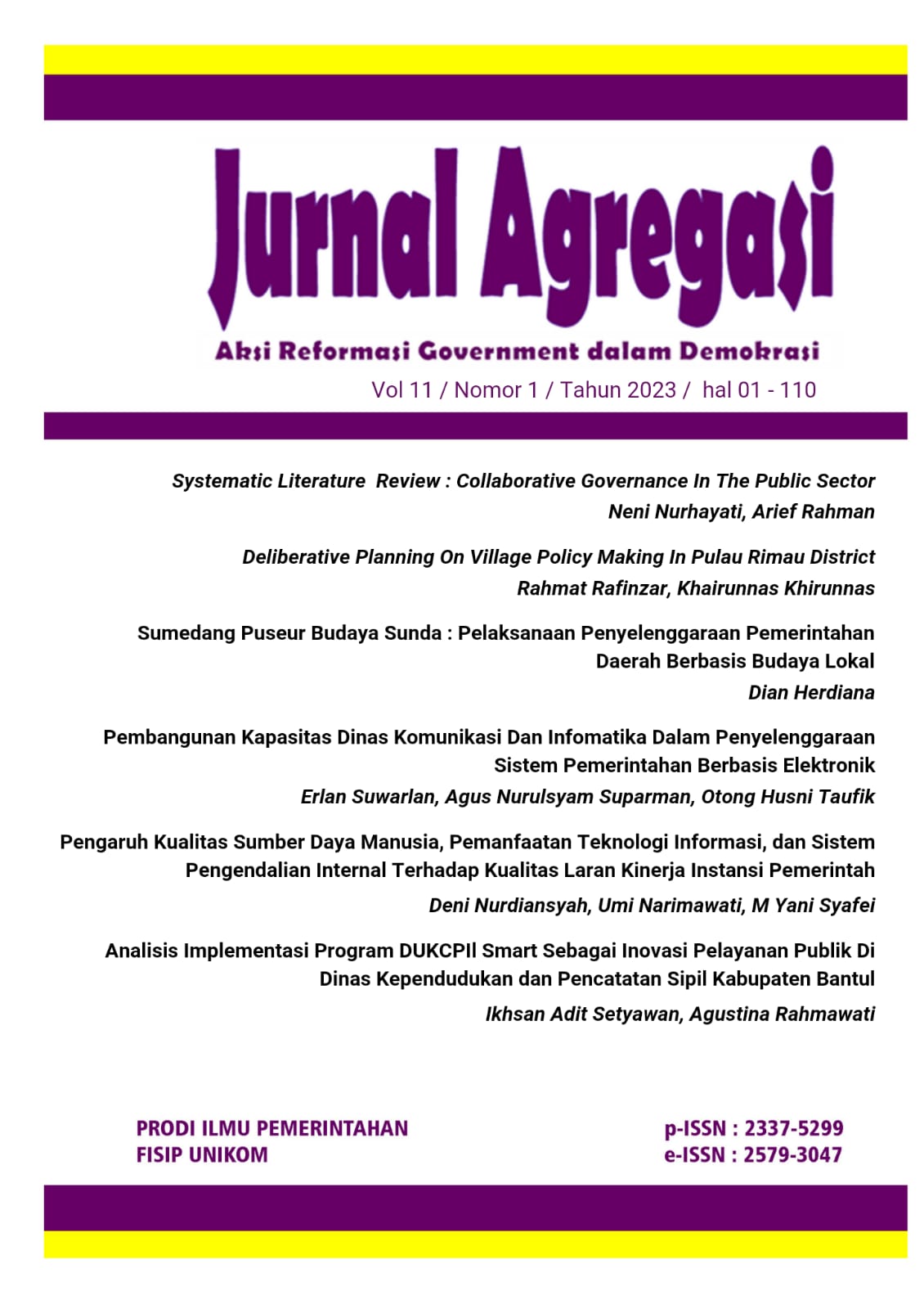SYSTEMATIC LITERATURE REVIEW: COLLABORATIVE GOVERNANCE IN THE PUBLIC SECTOR
DOI:
https://doi.org/10.34010/agregasi.v11i1.9207Keywords:
Collaborative Governance, Collaborative Innovation, Public SectorAbstract
Abstract
Increasingly complex and interdependent issues in the public sector make the need for cooperation and
collaboration even more urgent. Innovation through collaboration is the essence of the concept of open
innovation which must seek interaction with external agents to create ideas and improve services. This
work consists of 25 systematic literature review articles to synthesize and critically review
collaborative governance in the public sector. The detailed objectives are as follows: to summarize the
evidence on the phenomena and characteristics of collaborative governance; analyze the supporting
variables of collaborative governance; and analyze the field of application of collaborative governance
in the public sector. The authors' findings show that: First, in recent years there has been an increasing
interest in collaborating on public policy; Responding to the interconnected and complex nature of the
issues currently facing governments, academics and practitioners alike have focused on governance
processes that blur the boundaries between the public, private, and community sectors; Second, there
are many characteristics of collaborative governance as collaborative innovations that have not been
used as research variables; Most of the variables used are more dominant to external organizational
factors. Third, collaborative governance alludes a lot to technology and there are still many areas of
public service that have not been studied in its application; as many as 19 areas of application of
collaborative governance have been analyzed in this work.
Downloads
Downloads
Published
Issue
Section
License
This work is licensed under :

Creative Commons Attribution-NonCommercial 4.0 International License








